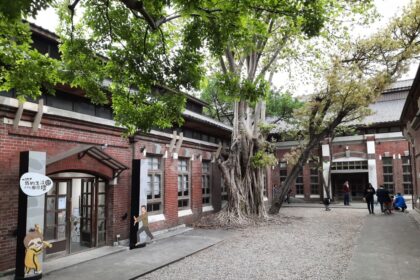The State of Mango Production in Sindh: A Fruit Under Threat
Sindh, Pakistan’s southern province, has long been celebrated for its lush mango orchards and the iconic Sindhri variety, often hailed as the “king of fruits.” Yet, beneath the sweet aroma of ripening mangoes, a crisis is unfolding. Over the past decade, the region’s mango industry has been battered by climate change, water scarcity, pest infestations, and systemic challenges, threatening not only the livelihoods of thousands of farmers but also Pakistan’s standing in the global mango market.
- The State of Mango Production in Sindh: A Fruit Under Threat
- How Climate Change is Reshaping Mango Cultivation
- Water Scarcity: The Lifeblood of Mango Orchards Dries Up
- Pests and Diseases: The Unseen Enemies
- Harvesting and Labor: Tradition Meets Modernity
- Economic Impact: Exports, Prices, and the Value-Added Sector
- Research, Innovation, and the Search for Solutions
- Policy Gaps and the Need for Government Action
- Broader Implications: A Regional and Global Perspective
- In Summary
Once a symbol of abundance, Sindh’s mango orchards are shrinking. According to official figures, the area under mango cultivation in Sindh has declined from 63,144 hectares a decade ago to just 58,900 hectares in 2023-24. While production figures have fluctuated—rising slightly from 329,300 tonnes in 2019-20 to 387,200 tonnes in 2023-24—the overall trend is downward, with yields and fruit quality suffering due to a confluence of environmental and economic pressures.
How Climate Change is Reshaping Mango Cultivation
Climate change has emerged as the single most significant threat to mango production in Sindh and across Pakistan. The region has experienced increasingly erratic weather patterns: unseasonal heatwaves, sudden cold spells, heavy storms, and prolonged droughts. These extremes disrupt the delicate life cycle of mango trees, from flowering to fruiting, and have led to widespread crop failures in recent years.
For instance, the early onset of summer and soaring temperatures—sometimes jumping from 28°C to over 42°C within days—have caused mango blossoms to wither prematurely. This disrupts pollination and fruit set, resulting in fewer and smaller mangoes. Conversely, prolonged winters and delayed summers have made orchards more vulnerable to fungal diseases, further reducing yields.
Dr. Mir Amanullah Talpur, a grower and researcher in Umerkot, Sindh, notes that “prolonged winters and delayed summers have resulted in reduced yields. The mild weather that lingers until early May negatively impacts mango growth, with the extended cold making the orchards more vulnerable to fungal attacks.”
These climate shocks are not unique to Sindh. Across South Asia, from Gujarat in India to the heart of Pakistan’s mango belt, farmers are grappling with similar losses. In some years, Sindh’s mango yield has dropped by as much as 50%, with entire harvests lost to storms, drought, or sudden temperature swings.
Water Scarcity: The Lifeblood of Mango Orchards Dries Up
Water is essential for mango cultivation, especially during the critical flowering and fruiting stages in February and March. Yet, Sindh’s orchards are increasingly parched. The province relies on irrigation from rivers and canals, but persistent shortages have left many growers unable to provide their trees with the moisture needed for healthy fruit development.
Mir Shah Mohammad Talpur, who manages a 450-acre orchard near Hyderabad, laments, “Look at the size of the mango—it’s 970 grams, but this could have been more than 1,000 grams or even closer to 1,100 grams if we provided water to the orchard before harvesting.”
Without adequate water, mangoes remain undersized and less sweet, reducing their market value. Water shortages also make trees more susceptible to pests and diseases, compounding the challenges faced by growers.
Pests and Diseases: The Unseen Enemies
Even as farmers battle the elements, they must also contend with a growing array of pests and diseases. The mango hopper, a tiny sap-sucking insect, has become a national concern, inflicting damage during the flowering and early fruit-setting stages. Hopper infestations can reduce yields by up to 40%, and their sticky secretions promote the growth of sooty mold, further harming the fruit.
Malformation disease, which causes abnormal growth of flowers and shoots, has also become more prevalent, often linked to changing weather patterns. Other threats include anthracnose and powdery mildew, fungal diseases that thrive in the humid, fluctuating conditions now common in Sindh.
Mahmood Nawaz Shah, president of the Sindh Abadgar Board, explains, “For the last few years, hopper attacks have become quite common. We don’t get research-oriented and evidence-based advice from the agriculture department on how to deal with it.”
Efforts to control these threats are hampered by a lack of coordinated government support. Many farmers rely on private sector advice, which may not always be in their best interest, and smaller growers often lack the resources or knowledge to implement effective pest management strategies.
Harvesting and Labor: Tradition Meets Modernity
The annual mango harvest in Sindh is a labor-intensive affair, blending traditional methods with modern innovations. Laborers, many from southern Punjab, migrate to Sindh each season, bringing expertise in plucking, sorting, and packing mangoes. The conventional “pattaee” method—climbing trees and catching mangoes in bags to prevent bruising—remains widespread, though some progressive growers now use specialized tools to minimize fruit damage and improve efficiency.
After harvesting, mangoes are graded and packed, with the best fruit destined for export markets. Hot water treatment, a process introduced to meet international phytosanitary standards, is now mandatory for mangoes exported to the European Union and other high-value markets. This treatment helps eliminate pests and extends shelf life, but adds to the cost and complexity of the export process.
Economic Impact: Exports, Prices, and the Value-Added Sector
Pakistan is the world’s fourth or fifth largest mango producer, with an annual output of around 1.8 million tonnes. Punjab accounts for 70% of production, Sindh for 29%, and Khyber Pakhtunkhwa for 1%. Mangoes are a vital export, generating up to $100 million in foreign exchange each year, with major buyers in Iran, the Gulf, Central Asia, the UK, and beyond.
However, declining yields and quality have forced exporters to lower their targets. In 2023, the export target was reduced from 125,000 tonnes to 100,000 tonnes, and actual shipments fell short. The value-added sector—encompassing processing, packaging, and warehousing—has also suffered, squeezed by rising costs for electricity, fuel, and inputs.
Waheed Ahmed, patron-in-chief of the All Pakistan Fruit and Vegetable Exporters Association, warns, “The effects of climate change have emerged as the biggest threat to mango production, which can well be gauged from the fact that mango production has declined for the third year in a row.”
As supply tightens, domestic mango prices have surged, making the fruit less accessible to ordinary consumers. Farmers, meanwhile, face the double blow of lower yields and higher production costs, with many forced to sell at reduced prices or abandon their orchards altogether.
Research, Innovation, and the Search for Solutions
Amid these challenges, there are glimmers of hope. Research institutes in Punjab and Sindh are working to develop new, climate-resilient mango varieties and improve pest management techniques. The concept of “genome gardens”—orchards where diverse mango varieties are tested for adaptability and resistance—has gained traction, though such projects require significant investment.
Dr. Abid Sulehri, head of the Sustainable Development Policy Institute, explains, “By planting various varieties, we can determine which ones are well-suited to Pakistan’s soil and climate. If a particular variety proves favourable, we can use it as a basis to develop new varieties. This is the underlying motive behind introducing the concept of a genome garden.”
Progressive growers are also adopting sustainable practices, such as organic farming and regenerative agriculture, to reduce reliance on chemicals and build resilience against climate shocks. However, these innovations remain out of reach for many smallholders, who lack the resources or technical support to make the transition.
Policy Gaps and the Need for Government Action
Despite the scale of the crisis, many farmers and industry experts criticize the lack of effective government intervention. There is a consensus that research and extension services are inadequate, leaving growers to fend for themselves or rely on private advice that may not always be impartial.
Calls for action include:
- Increased investment in agricultural research and development, particularly for climate-resilient mango varieties.
- Training and support for farmers in pest management, irrigation, and sustainable practices.
- Improved water management and infrastructure to ensure reliable irrigation supplies.
- Expansion of hot water treatment and other export-oriented facilities to maintain market access.
- Policy reforms to support the value-added sector and reduce input costs.
Without urgent attention to these issues, the future of Sindh’s mango industry—and the livelihoods it supports—remains at risk.
Broader Implications: A Regional and Global Perspective
Sindh’s mango crisis is not an isolated phenomenon. Across South Asia, mango growers are facing similar challenges as climate change accelerates. In India’s Gujarat and Saurashtra regions, unseasonal storms and droughts have slashed mango yields by up to 35%. The crisis has ripple effects throughout the global mango trade, with reduced export volumes and higher prices affecting consumers worldwide.
At the same time, the story of Sindh’s mangoes is a microcosm of the broader struggle facing agriculture in the era of climate change. It highlights the urgent need for adaptation, innovation, and coordinated action to safeguard food security and rural livelihoods in vulnerable regions.
In Summary
- Sindh’s mango orchards are shrinking, with production and quality declining due to climate change, water shortages, and pest infestations.
- Erratic weather patterns—heatwaves, cold spells, storms—are disrupting the mango life cycle and causing crop failures.
- Water scarcity during critical growth stages leads to undersized, less marketable fruit and increases vulnerability to pests and diseases.
- Pest outbreaks, especially the mango hopper, and diseases like malformation and mildew are major threats, exacerbated by climate change.
- Export targets have been reduced, and the value-added sector is struggling with rising costs and lower output.
- Research and innovation, such as genome gardens and sustainable farming, offer hope but require greater investment and support.
- Farmers and experts call for urgent government action to provide research, training, and infrastructure to sustain the industry.
- Sindh’s mango crisis reflects broader regional and global challenges in agriculture under climate change, underscoring the need for adaptation and resilience.












